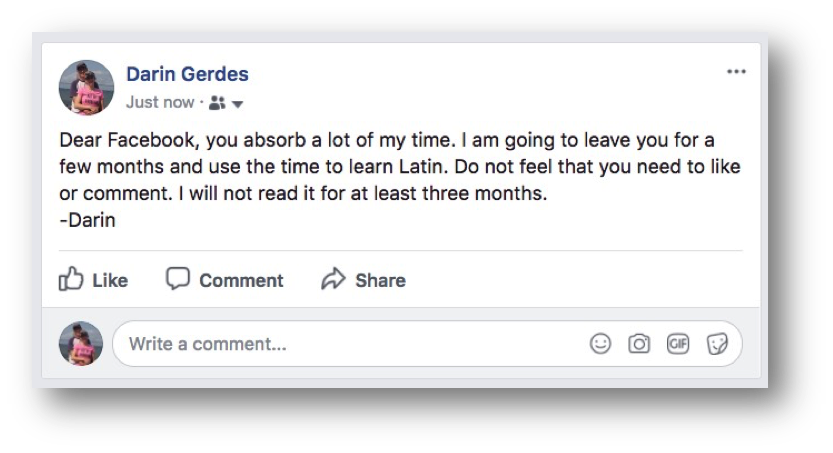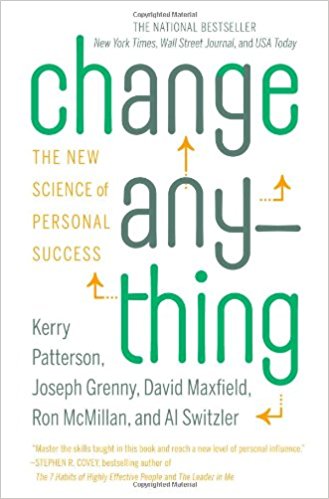“Give me a lever and a place to stand and I will move the Earth.”
-Archimedes (287-212 BC)
We are continuing a series focused on getting leverage on yourself to make personal changes. This week we will talk about the last two elements Patterson, Grenny, Maxfield, McMillan, and Switzler’s (2011) identify in Change Anything: The New Science of Personal Success.
The Six Sources of Influence
The six sources of influence are listed below. I will describe each of them in some detail over the next few weeks, but for now, here is a list:
Source 1 – Personal motivation (What do you need to do to “love what you hate?”)
Source 2 – Personal ability (How will you “do what you can’t?”)
Sources 3 & 4– Social motivation & social ability (What must you do to “turn accomplices into friends?”)
Source 5 – Structural motivation (How will you “invert the economy?”)
Source 6 – Structural ability (What will you do to “control your space?”)
This week, we will talk about Source 5 and Source 6.
Source 5 – Structural Motivation
You must also be intentional about the things in your environment. You can use your computer to complete work efficiently or you can use it to waste hours of time on social media. The authors explain that in order to change, we must “invert the economy,” and this may call for drastic measures. For example, I know that in the evenings I turn on the news and check out with social media, so I turned off Facebook for the duration of the project. Problem solved. No temptation when Facebook messages are not popping up to lure me in.

I have also turned the process into a game. I am tracking my progress and I have given the link to my students. If you are interested, you can follow it too.
https://docs.google.com/spreadsheets/d/1zu6syc6lQakEcz8vHTYYIS5DEPO1-iPldzDZqJcyQqs/edit?usp=sharing
Successful writers and comedians use this type of approach:
Years ago, when Jerry Seinfeld was still on the comedy circuit, a young comedian asked him for advice on how to improve. Seinfeld replied that the key to being a better comedian was writing better jokes and the way to write better jokes was to practice. But it wasn’t just about practicing in general, Seinfeld explained; it was about building up a habit: the writing habit. Seinfeld advised using a simple trick to get the habit going. You buy a big wall calendar with a box for every day of the year. Then, each day that you complete your writing task, you put a big cross on the calendar. As the weeks pass, the chain of crosses on the calendar grows longer and longer. Your only job, urged Seinfeld, was not to break the chain.[i]
Source 6 – Structural Ability
If the environment is working against you, change the rules to make it work for you. As the authors explained:
You live in that same powerful physical world. Every single day of your life you face opponents that are always around you, never sleep, are completely unyielding, and are so quiet that you stop noticing they’re even there. Such is the power of things. So, if you ever hope to take control of your life, you’ll have to first take control of your space.
The good news is that when you do, you gain the same sleepless ally supporting your change effort. Your job is to find the subtle ways your personal environment currently enables your old habits and then redesign it to support your new ones. When you transform your environment from foe into friend, you can make the changes that sometimes feel impossible practically inevitable.[ii]
So how do you do this? Let me offer a few examples:
- Can’t get work done because of too many interruptions? Set inviolable appointments and keep them. Focus on your work during those blocks of time.
- Tempted to browse the internet while you are working? Turn off the Wi-Fi. You can turn it back on. Let the inertia of having to walk to another room to plug in the Wi-Fi support your goal of productivity.
- Want to take your vitamins regularly? Leave them in reach on your desk where you work. You will find that you take them regularly when you make it easy on yourself.
The authors call these actions “fences” that help you “control your space.” Why not use these simple tools? Let fences defend you when you are too weak to defend yourself.
Warning: These tools are not enough on their own. You need personal, social, and structural supports in order to achieve your change. The key is to use all of these tools in tandem in order to provide yourself with the maximum leverage on your goal. We will check in on our progress in a couple of months. Good luck.
What About You?
What is your goal this year? How can you put the structural sources of influence to work for you?
Source 5 – Structural motivation (How will you “invert the economy?”)
Source 6 – Structural ability (What will you do to “control your space?”)
References
[i] Dean, J. (2013). Making habits, breaking habits: Why we do things, why we don’t and how to make any change stick. Boston, MA: Da Capo Press. (p. 131).
[ii] Patterson, K., (2011). Change anything: The new science of personal success. New York: Business Plus. (p. 116)

Dr. Darin Gerdes is an Associate Professor of management in the School of Business at Charleston Southern University. All ideas expressed on www.daringerdes.com are his own.
This post was originally created for Great Business Networking (GBN), a networking organization for business professionals where Dr. Gerdes is the Director of Education.

